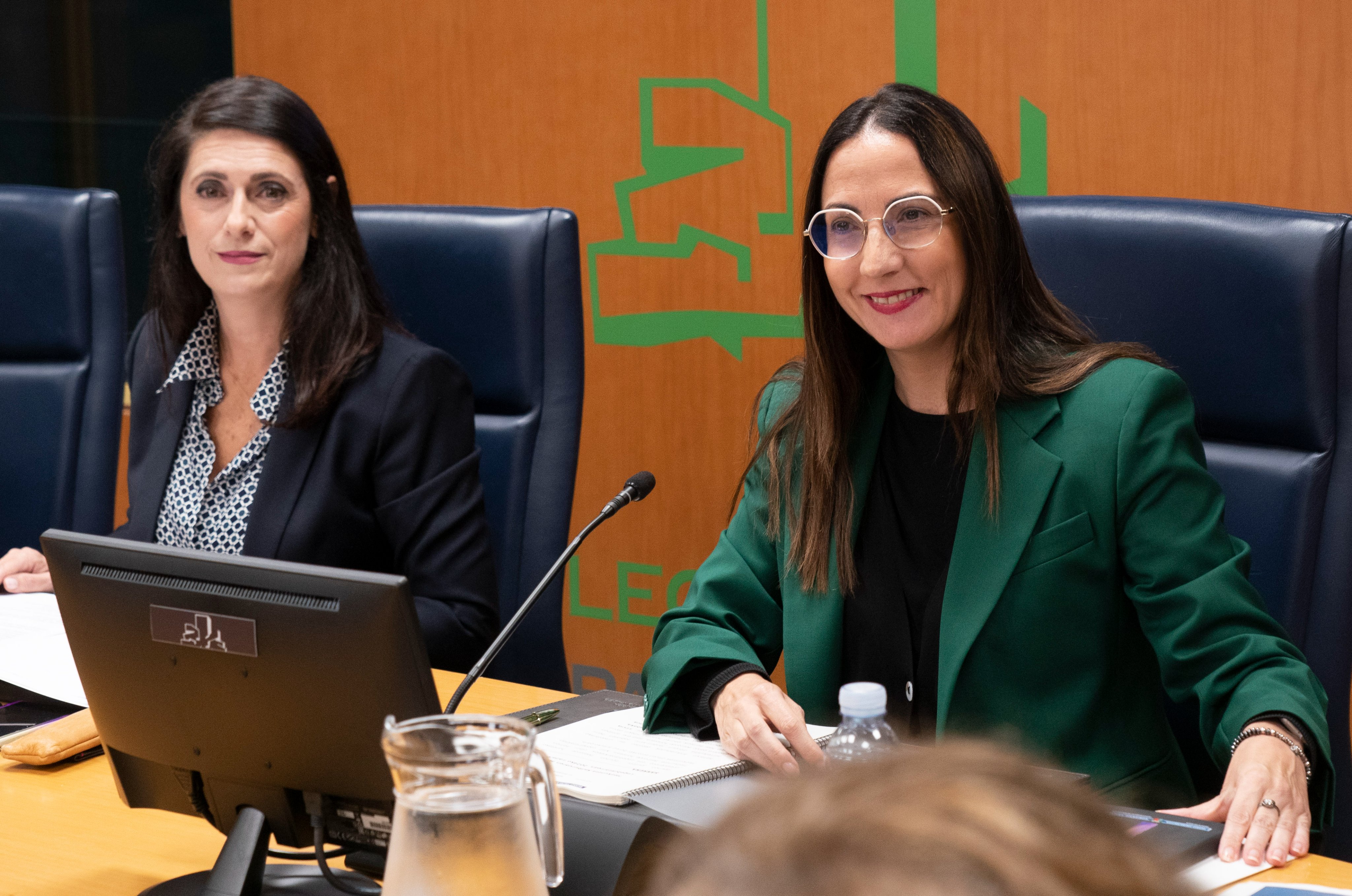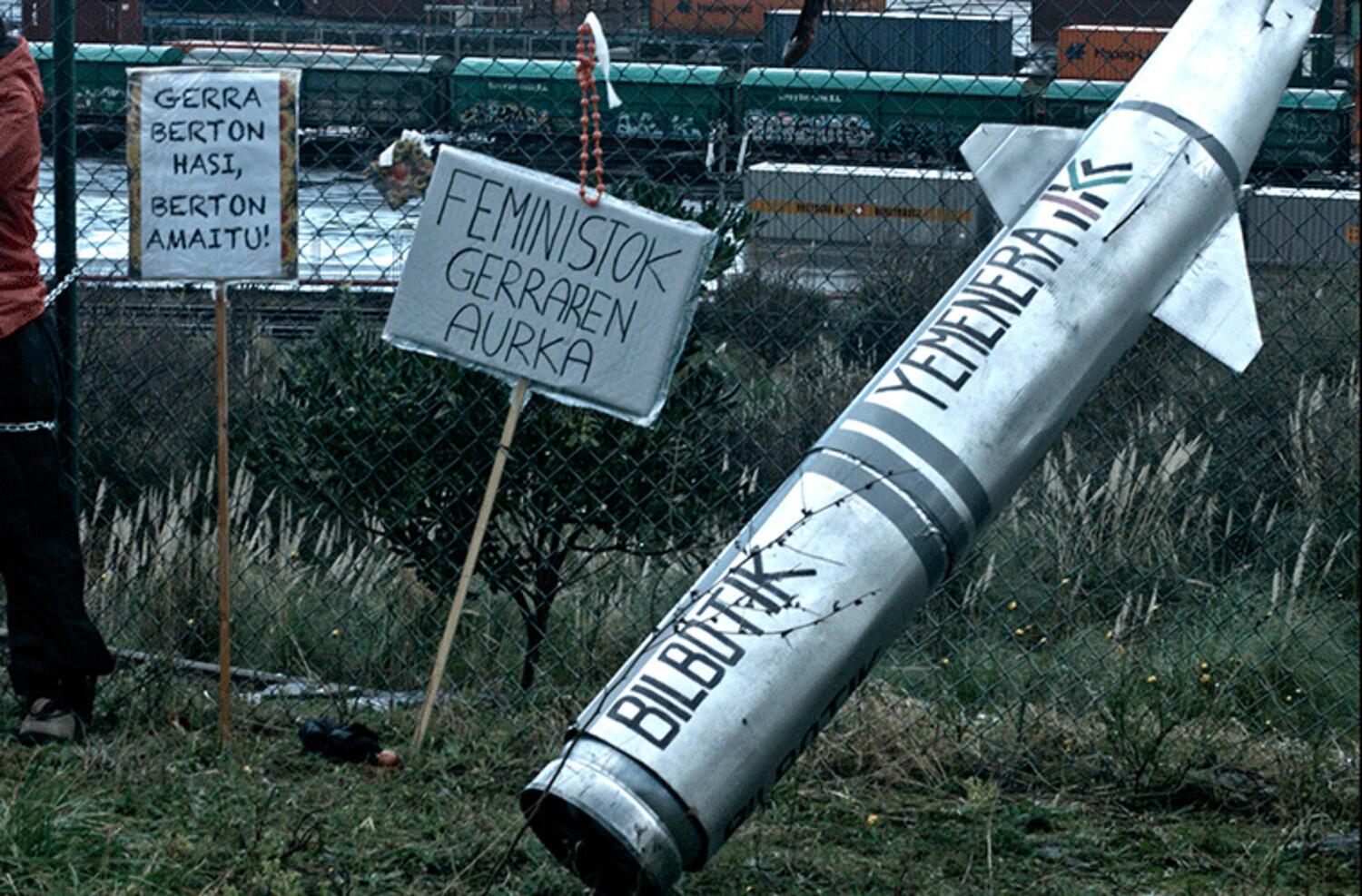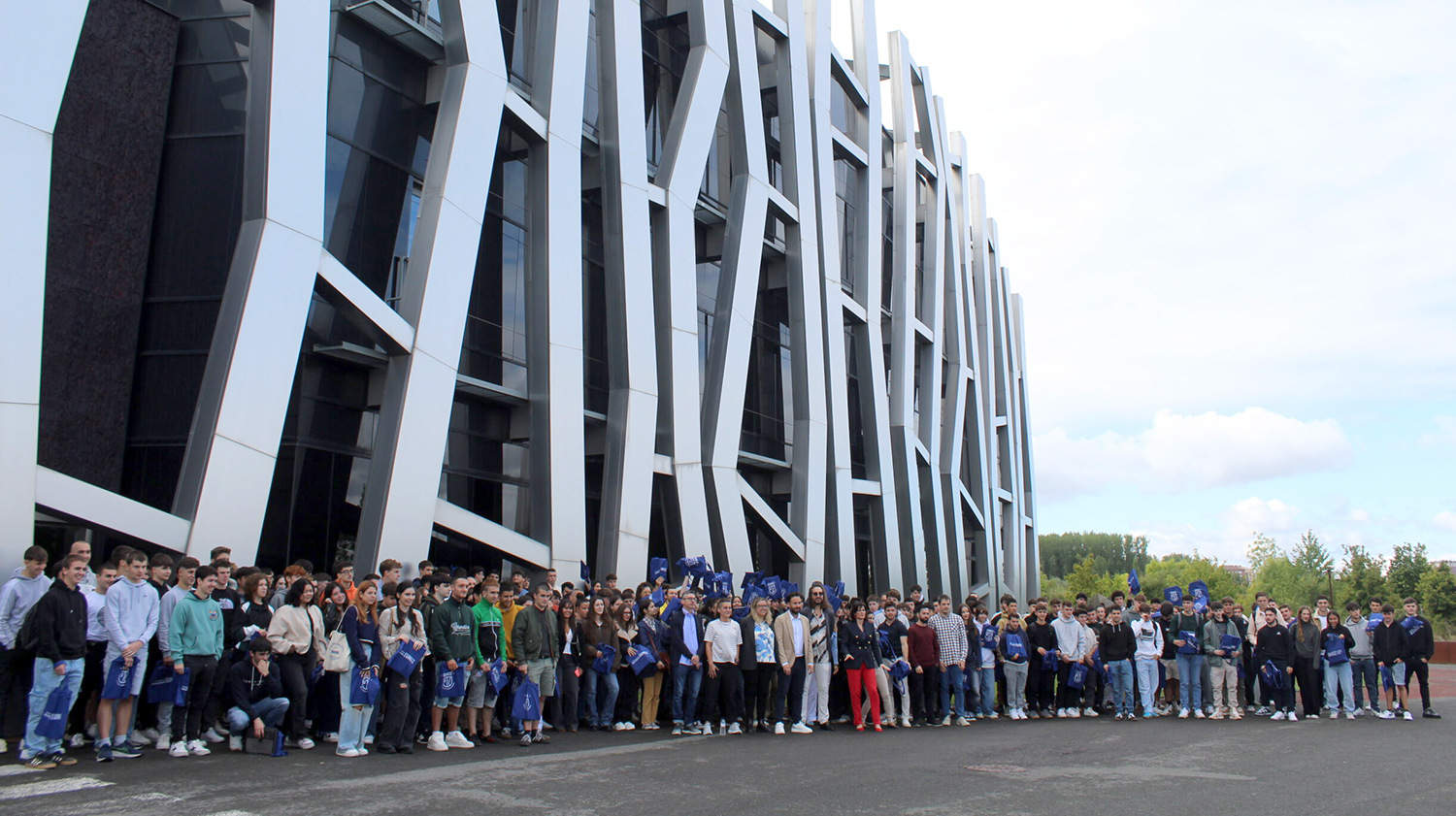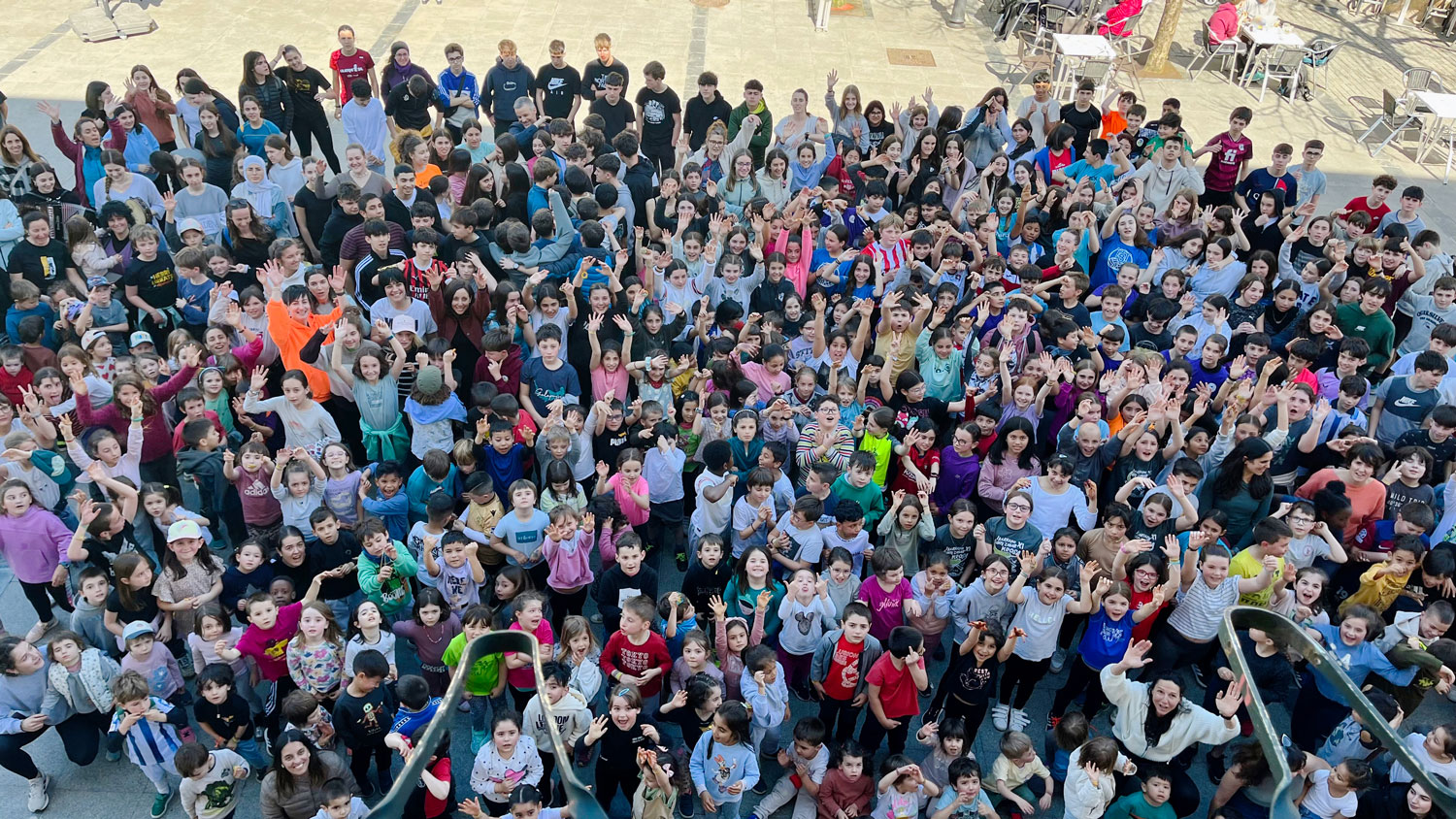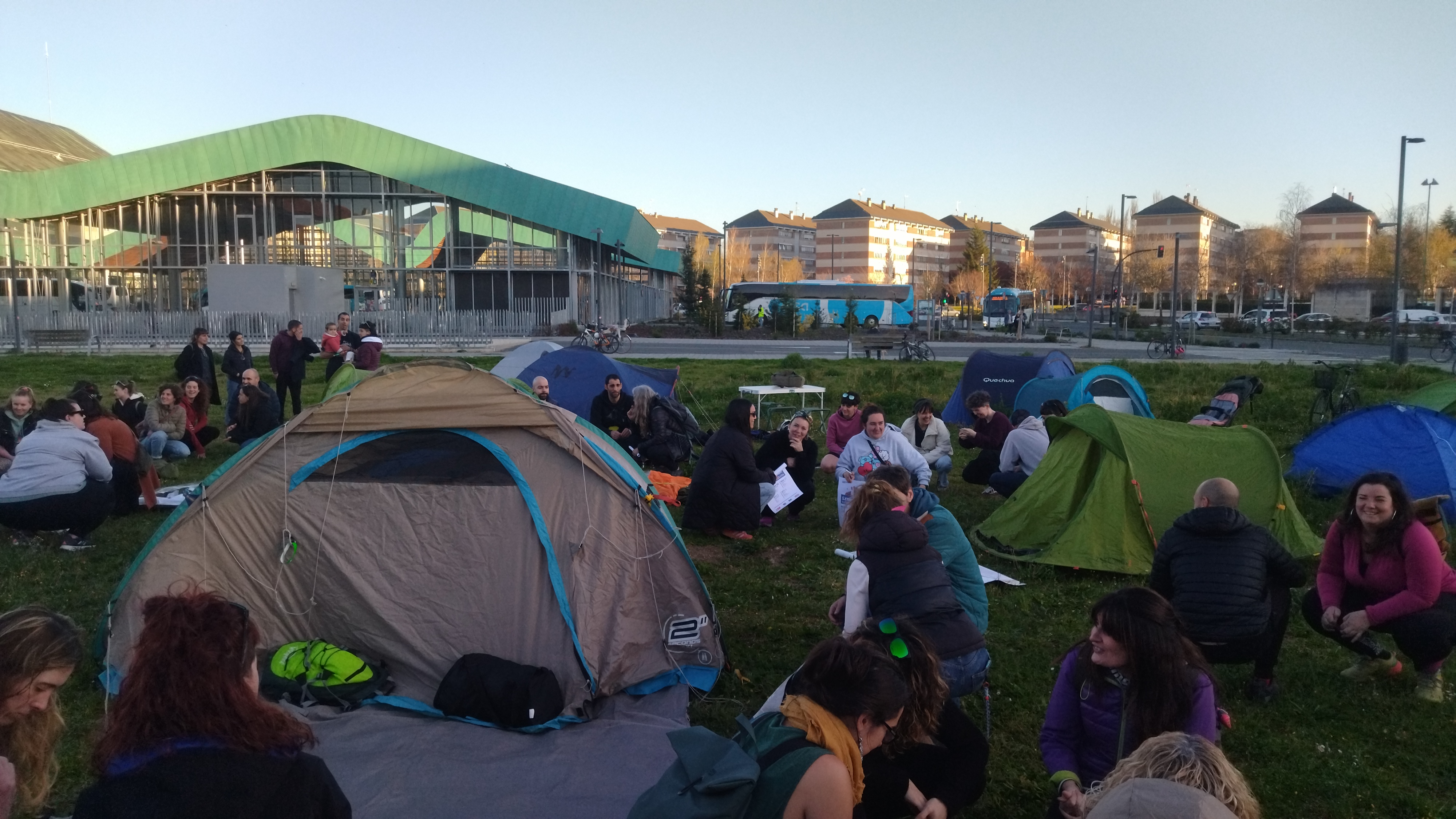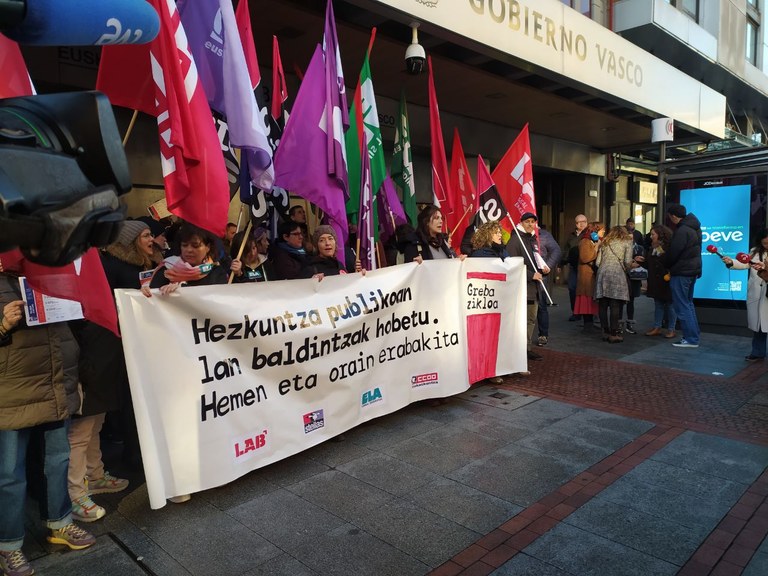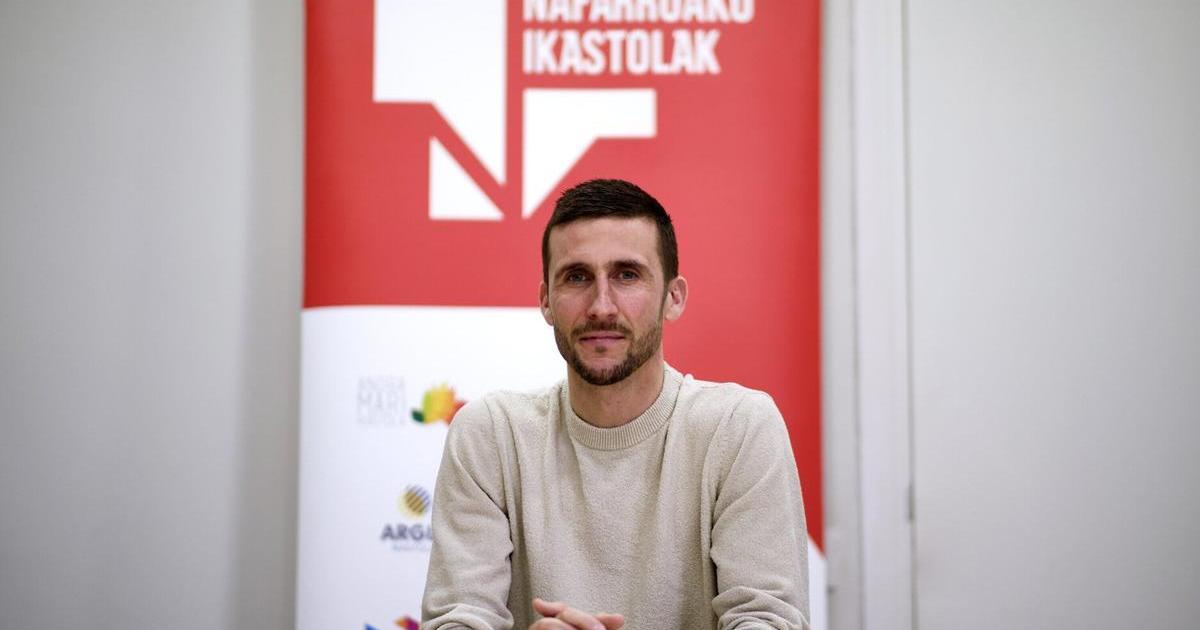In schools, we have an architecture that prioritizes control rather than surveillance.
- Although the transformations of the courtyards of the centers are increasing, the old buildings and the rigid infrastructures are still the ones that dominate the education (both in interior and exterior spaces), to learn, move and relate to taste, far from the spaces, designs, aesthetics and furniture necessary to develop educational pedagogies. In schools there is an architecture that prioritizes control rather than surveillance, and the architects Fermin G Blanco and Clara Eslava are committed to the challenge of changing that. "From the point of view of pedagogical architecture, the black hole in the system is the institutes."

For educational centers to be habitable, they should have light, natural, flexible and organic spaces, but that is not the case. The contemporary school has been built detached from the surroundings (from the village, from the neighborhood…), with anonymous, homogeneous, linear, industrial, systematized and repetitive structures, and, in addition, many have become obsolete. This is what our two interlocutors, Fermin G Blanco and Clara Eslava, experts in pedagogical architecture say: “In schools we accept scenarios that we would not accept in a current house, because over the years we change furniture, curtains, colors… and we get spaces to transmit something more.” For the institutes it is the worst grade: “The idea of the importance of care is lost in Compulsory Secondary Education, the adolescent looks almost as an enemy, someone who questions you, and to that it is added that we can increase the ratios of students and make macro-institutes”. The result, the architectural design designed to control and prioritize the discipline.
Instead, many things could be done to improve the experience inside the center in terms of light and natural ventilation, in the type of soil, in the structures of the interior/exterior union, in the acoustics, in the design and furniture materials, in the temperature, in the classroom shape – why it is not curved, organic, round… –, in transparency… “If it is an aesthetic school – harmonic, you will feel coherent, diverse… what we take care of you On the other hand, when we have spaces of great ugliness, the message is ‘do not take care of you’, says Eslava. In addition, the decrease in the birth rate is an opportunity to reduce the ratios and conquer new spaces, explains Eslava, “but I have seen the opposite, to reduce the number of children and to lock a class that has a free room, because there can be no space without caregivers”.
Splava: "If it is an aesthetic school - harmonious, coherent, plural... that will make you feel good - the message is 'here we take care of people'. On the other hand, when we have spaces with great ugliness, the message is ‘do not take care of you’”.
They have set out a positive example that they have guided. In Larraintzar’s school they have changed the dining room: chromatically harmonious, acoustically respectful, with another floor, with the windows open so that between the landscape of Ultzama… “Now you are somewhere else, also sensory and mentally, and you change paradigm; one of the children told us, ‘now what is wrong in school is everything else’”.
As they contribute, they have to conform with small works, furniture changes or new designs made here and there, because it is impossible to change everything, the centers have few resources and from the administration do not invest in it, do not wager, the interlocutors have complained, “and this is the most important thing, to want to change and invest in it; we live interesting moments in the processes of levelling and naturalization of courtyards, because sometimes there is a lot to warn.” “There will come a time when, smelling the business, companies will enter and offer the backyard project in a pre-designed way, two or three options depending on the budget, reversing the idea, pushing the centers to buy backyards already built, courtyards not thought about or thought about by the educational community.”
Defensive architecture
Although we read here and there the news of the centers that are transforming the patio, the patio of most schools is still a monochromatic floor of flat concrete. And more and more is being asked to transform those courtyards that do not promote psychomotor thinking, unbalanced from the point of view of gender, climatically harmful; they want to introduce nature, balance games, other kind of soil… but White says clearly: inertia is widespread and there is still a lot of resistance on the part of the administration to invest in change. “You’d be surprised by the number of centers that don’t think the same and don’t want a green patio. I have been told in some centers ‘we don’t want inclusive courtyards’, imagine! So what do you want, an exclusionary patio?”
The architect says that behind is the shadow of defensive architecture. Defensive, because the starting point is the design that avoids complaints and complaints, an architecture that demands the least maintenance possible. “I have just been in a school with the surroundings of the enclosed trees, in order to avoid danger; in case we want the child not to hurt, all well tied and closed under the rubber floor, the sand areas have disappeared from the cities and schools, so that they don’t get dirty, or for everything to be synthetic… and to save maintenance, there are those who don’t want the trees, so they don’t have to pick up the leaves, or to have an artificial field.” In the background, says Blanco, beyond architecture it is a defensive pedagogy, the “anti-pedagogy”.
White: "Just in case we want the child not to be hurt with everything well subject and closed under the rubber floor, so that the sand areas are not dirty... A defensive architecture is made, that is, a defensive pedagogy: anti-pedagogy"
Drop the walls, rise from the chairs
“The school is hiding behind the walls and we have to break those walls,” says Clara Eslava. We are literally breaking down walls in a school, students will be able to see the Arga River from now on, but to throw the walls or not, there has to be a will to look beyond the wall, if it doesn’t make sense.”
Inside there are also those who have torn down the walls between the classrooms [read the article Walls from the classrooms], and the interlocutors have rated it as positive to the extent that they involve diaphhanous spaces and flexibility, but have warned that the architectural project must come from the hand of the pedagogical project: if we knock down the wall and have a wider space, what will we use it for? If we share a new space, how will we manage the changes that will bring us more students and more relationships? If we move from acoustic comfort to higher noise, what do we think? Will there be more than one teacher in a shared space? And how? Will we adapt the schedules to the new dynamics that will be generated (for example, giving an hour and a half to the subject of 45 minutes)?... “On more than one occasion I have seen how two classrooms, throwing the central partition and filling the space with the super exciting kit sold by some company, but keeping the whole rest of the school equally – he criticized Blanco. In the end, what you have is a special class, in a fully conventional school. It is a pity that ideas and projects that are good by themselves often end up implemented in an almost anecdotal and sad way in schools.”
The demolition of the walls is, among other things, a demand for mobility, precisely because one of the criticisms made to the school is that it often does not give much chance to move. “The classroom is the basic unit of the school: you are closed and you are already, can you go in and out autonomously? Does trust or control prevail in these cases?”, said Eslava, adding that the structure responds to the logic of the educational system: “All students have to do the same and at the same time, standing and quiet at the table. In schools where there is more flexibility, for example when different activities can be carried out at different rates around the same project, autonomy and mobility are facilitated”.
Sometimes even game time is not too stimulating. “The center where I’ve just been has only basketball baskets and soccer doors, no other game element, no slides, no balancing logs, no swings. That’s very hard,” Blanco said.
Splava: "Change is OK, but change is based on buying what's already ready. We work differently: from what we have thought and agreed in the center comes a plan"
Where do I start?
We ask our partners if there is a lack of courage and imagination to represent other designs, areas and aesthetics. “Projects are missing. Starting from a need, if we go to imaginative and playful architects, we will surely create some good approaches: putting this and the other under the staircase, doing the same thing in this other corner… but the problem is that when there is a need, the work is directly linked to companies, to the contracted company that cheaper will solve that need, without taking advantage of the opportunity to create other spaces and designs – we answer White-. Behind the existing gaps and needs, we see a world full of possibilities, but instead, the patch goes behind the patch to cover the problems.” After all, a fountain, the entrance of the school, the hallways, the laboratory, a door… “Everything can be an opportunity for a project, you can also play with small spaces and elements, you can beautify and improve, adding nuances, details and playful elements, changing the aesthetics… And all you do is contribute for the better”. In the words of Eslava, the great contribution that does all this is the care of people.
“Let’s go to the bathrooms, for example,” adds Eslava. Think, water, mirrors, fountains… It can be many beautiful places, which can give a lot of play, if not to put a plant and water, and also to work co-education from a gender perspective in Early Childhood Education, but it doesn’t exist.” The other example has been given by Blanco: in one class a pit was made, yes, a big hole, and the teachers at first were a little bit lost, what to do with the pit? “Since there are no lessons about the graves, ha, ha, ha, but those who are encouraged to take these kinds of steps are the first to activate them, who sooner or later will know how to take advantage of them.”
At the Arbizu school they have also talked about the project they have carried out themselves in relation to furniture. The square tables have been changed by hexagonal, of different heights – “because not all children have the same height, although often all the tables are at the same height” – and in addition to coloring them, they have placed chairs and tables that are collected as Russian dolls. The objective is that, when they are not specified, they can be stacked in a corner in an easy and beautiful way, thus achieving many available spaces: “We have recovered the ground in Arbizu.”
The problem is that, according to Fermin Calvo, the furniture of the centers is based on a catalog that has hardly changed since the 1980s. “Now in the catalogues there is the line ‘Montessori’, organic materials, for teachers who want it, but these furniture reaches the maximum of Early Childhood Education. And they have another line, the ‘classroom of the future’ (Ikasnova, Aulanova, Ikaslab…), all equal, homogeneous. We recommend that they take what is interesting and necessary from the catalog, which in the rest of the cases is better tuned than there is or resort to other companies”. “They talk about the classroom of the future and innovation, they tell us ‘think what educational space you want’, but they give us a catalogue that comes directly from Brussels, without a process of participation, according to the interests of technological companies,” adds Clara Eslava. The change is fine, but the change is based solely on buying what is already ready. We work differently: we reflect on the needs, the possibilities, the solutions that are in the center and we present a plan to the city council to think as a team and take what was agreed to the competition.”
White: "Behind the gaps and needs that exist, we see a world full of possibilities, but instead, the patch goes behind the patch to cover the problems."
The courtyard of this school yes, not the courtyard of another center?
When they proposed to make more changes in Arbizu, they received the “terrible phrase” from some members of the administration, says Eslava: “If we give them something different, the others will also want.” That is to say, on the one hand, that the improvement of this center would be a concession to the rest, and on the other, that more centers would demand changes and that there was no budget for everyone. Eslava discovers the magic word that it does nothing: the pilot experience. “Let’s do pilot experiences, follow up and evaluate them, and gradually we are implementing changes in all places. A good starting point is, for example, to start renovating the most troubled centers or those in a worse situation.”
Conversely, the partners agreed on the need for an infrastructure map for this purpose. “We would find many very obsolete and remiendos centers, and the map would be a good starting point for developing each school’s strategic plan: where to start, what are the priorities. Because we are talking about what the ideal school should be like, but at the same time we have kids in class going cold (or hot). What happens is that these problems, which technically must be solved, should be used to make other spatial, architectural and aesthetic changes, along the path already mentioned”.
Vitoria-Gasteiz has been an example: the town hall is naturalizing the courtyards of all public centers - "from the environmental point of view, but the change will also benefit the game, the pedagogy…" - and the two architects have stressed that this is the way, because it responds to a city policy that will affect the whole network. After all, children and young people spend many hours in school, “and living well in school is a great thing.”

Seaska Sarean inklusio egoeran dauden 165 ikasleei laguntza bermatzeko hasi dute kanpaina, antolaketa propioa eratuta. Frantziako Hezkuntza Ministerioaren jarrera salatu dute kanpaina aurkezteko prentsaurrekoan, behar bereziak dituzten haurren inklusiorako baliabide... [+]
Hezkuntzari buruzko legediak, Ekonomia Lankidetza eta Garapenerako Erakundearen eta planetako jaun eta jabeen aginduei jarraituz, ikasleek ikasketa etapa bakoitzaren amaieran “irteera-profil” jakin bat izatea bilatzen du. Ez pentsa profila zerbait itxia eta bukatua... [+]
Non daude talka handienak eta zenbateraino dago gertu akordioa, EAEko hezkuntza publikoko irakasleentzat? Greba ziklo luzeari amaiera emateko sukalde lanaren eta gakoen inguruan mintzatu gara, STEILASeko bozeramaile Haizea Arbiderekin. “Grebak bertan behera utziko... [+]
Nolako esperientzia eta ondorioak izan dituzte iraganean bateratu ziren ikastetxeek? Zein berme eskatzen dituzte orain fusio fasean murgilduta daudenek? Bi ikastetxek bat egiteko prozesuan, aintzat hartu beharreko gakoak zein diren aletu ditugu, etorkizunean fusioen politikak... [+]
Astelehen arratsalde-gaueko negoziaketa bilera luzearen ostean aurreakordiorik lortu gabe, EAEko hezkuntza publikoko irakasleak grebara deituak izan dira berriz ere; urtea hasi denetik bosgarren greba eguna izan da asteartekoa. Lanuzteek %75eko jarraipena izan dutela adierazi... [+]
Gure Haurrak ere Badira ekimenak deituta, Israelek azken egunetan Gazan hildako gehienak haurrak direla salatu dute. Gobernuei eta erakundeei Israelekin harreman oro etetea ere exijitu diete, "genozidio honen aurka argi eta tinko" lerratu daitezen.
Hezkuntza Sailarekin hainbat aldiz bildu dira hezkuntzako sindikatuak irakasleen lan baldintzak negoziatzeko. Hitzarmena berritzea, baina, ez dute lortu, eta martxoko eta apirileko bost greba egunetarako deialdia egin diete irakasleei. Lehenengoa astearte honetan izango da.
Nafarroako Ikastolen Elkarteak lehendakari berria du. Oier Sanjurjok hartu dio lekukoa Elena Zabaleta Andresenari. Beste zazpi kide izanen ditu alboan Sanjurjok.











